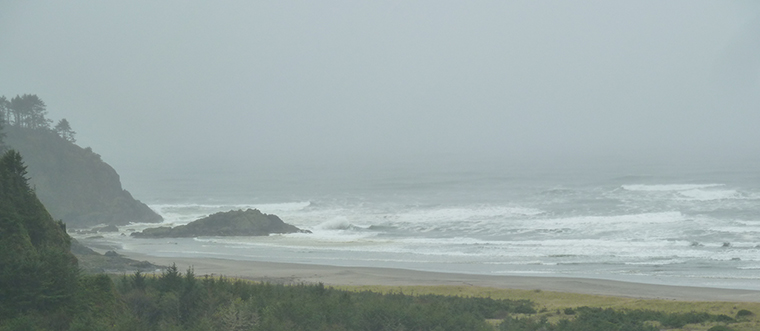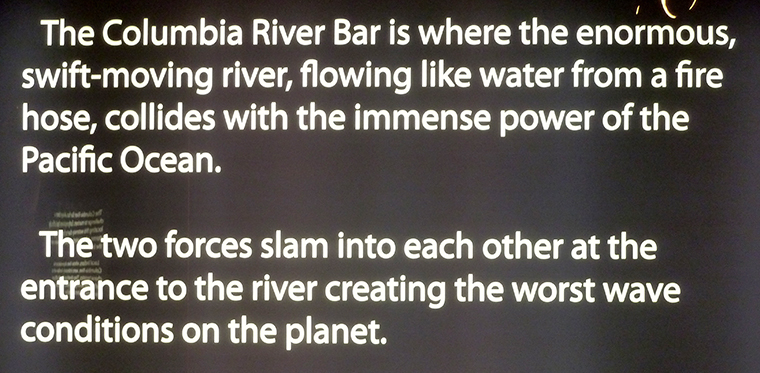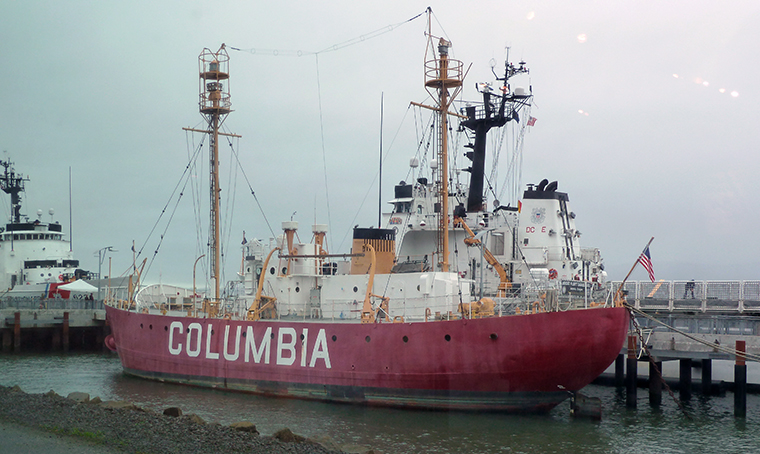The weather service predicted a 100% chance of rain for today and they were spot on. The heaviest came in the morning so I slept in, took my time over Sunday brunch and then headed south along the Pacific coast for the relatively short drive to Seaside, Oregon. I had spent 6 nights in Washington – far more than any other state – but all good things must end.
To follow the journey, see the map and video here.
One of the first beach towns I passed through was called Grayland and I could not help wondering if they were being a little too honest about their weather to be good for business. Nevertheless, the scenery lived up to the standard I had come to expect from Washington even if, on this day, it was hard to tell the difference between the ocean, land and sky. I had two places I wanted to see along the way. The first was the Lewis and Clark National Historic Park, which is actually spread across 11 different locations in Washington and Oregon. Since I was not sure which of these might be most interesting I decided to make my first stop at the Lewis and Clark Interpretive Center which is located in Washington’s Cape Disappointment State Park. The catch was that, in order to pay the $5 admission fee to this Federal visitor center, you also had to pay a $10 access fee for the State Park. With the bad weather limiting activity and little idea of how interesting this would be I decided that $15 was too much to pay for a few minutes in a visitor center and, appropriately disappointed, I moved on.
I had two places I wanted to see along the way. The first was the Lewis and Clark National Historic Park, which is actually spread across 11 different locations in Washington and Oregon. Since I was not sure which of these might be most interesting I decided to make my first stop at the Lewis and Clark Interpretive Center which is located in Washington’s Cape Disappointment State Park. The catch was that, in order to pay the $5 admission fee to this Federal visitor center, you also had to pay a $10 access fee for the State Park. With the bad weather limiting activity and little idea of how interesting this would be I decided that $15 was too much to pay for a few minutes in a visitor center and, appropriately disappointed, I moved on.
After driving along the northern shore of the Columbia River in Washington and over the 4.1 mile long Astoria-Megler bridge needed to cross this monster I stopped in Astoria, Oregon to visit the Columbia River Maritime Museum. This was superb and I definitely recommend it to anyone traveling this way. Although the museum is fairly small it does a wonderful job of describing the area and allowing you to feel that you have learned a great deal of its history, significance and, above all, about the river. According to the museum, it is the only river that has breached the mountains created around the Pacific Rim by the Ring of Fire and deposits 1.5 billion gallons of water each day into the Pacific Ocean. The museum describes the result.  In addition to exhibits on the history of the area, salmon fishing and canning and maritime life the museum captures the danger of the Columbia River bar and the 400 rescues the coast guard are called on to perform each year. The museum also hosts several coastguard vessels and The Columbia, a lighthouse ship which is open for touring as part of the museum.
In addition to exhibits on the history of the area, salmon fishing and canning and maritime life the museum captures the danger of the Columbia River bar and the 400 rescues the coast guard are called on to perform each year. The museum also hosts several coastguard vessels and The Columbia, a lighthouse ship which is open for touring as part of the museum. As I left the museum the rain picked up again and I made the short drive to Seaside, Oregon for the night. Despite the weather I feel that the Oregon coast will still impress and I am looking forward to driving the coast road all the way to LA.
As I left the museum the rain picked up again and I made the short drive to Seaside, Oregon for the night. Despite the weather I feel that the Oregon coast will still impress and I am looking forward to driving the coast road all the way to LA.

Catching up on your videos during breaks is helping me get through parent conferences this afternoon.
Wow, the fact that my videos are entertainment is great (even though it is only in comparison to parent conferences). Thanks, Steve.